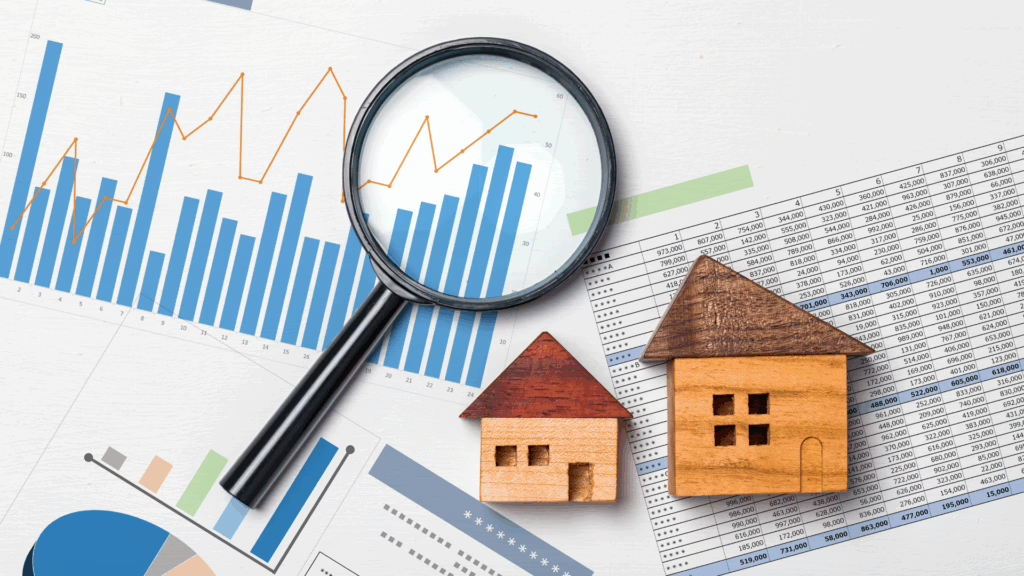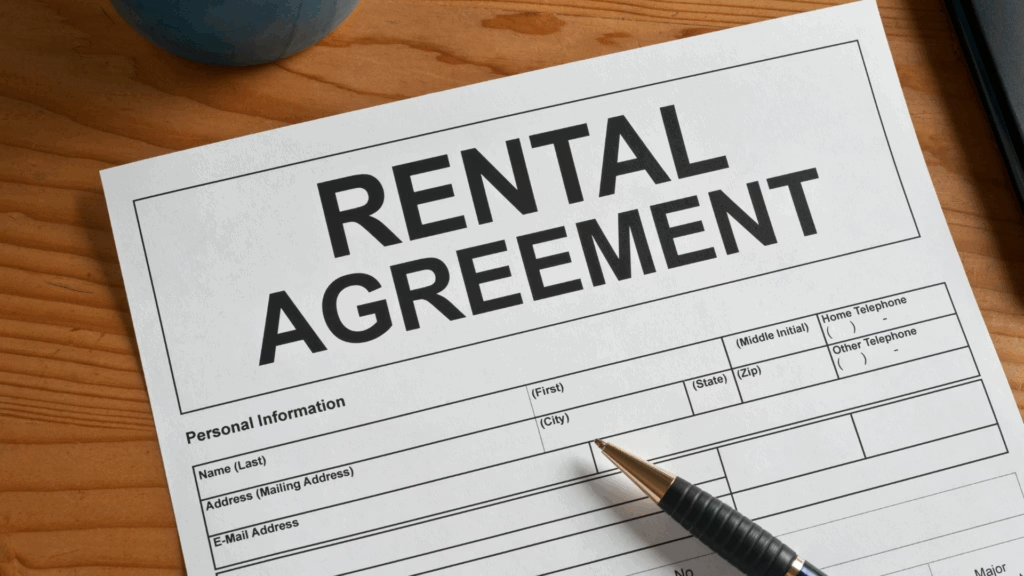A unique kind of excitement comes with building your dream home. The thought of having custom cabinetry, handpicked tiles, and a floor plan you designed is an experience like no other! All the research from Pinterest and Zillow finally culminates in your one-of-a-kind dream home. Yet, the brilliant path to your dream home can be convoluted when you still have to sell your current home.
Timing the sale of your current home while overseeing your new build can be likened to choreographing a dance with multiple acts, from real estate agents and contractors to banks and inspectors. If you choreograph seamlessly, you will land gracefully in your new custom-built home. However, if the timing is off even for just one of the acts, you could end up couch-surfing with two mortgages simultaneously.
We have researched these scenarios for you so you can understand how homeowners manage both ends of the real estate spectrum. Here is the information you will need to know if you are planning to sell your current home while building your dream home
Understanding the Balancing Act

Selling one home while building another is more than a logistical challenge. Finances, emotions, and your mental fortitude must be considered in every step. The key to navigating both processes is clarity on timing, financing, and your risk tolerance.
The goal is to avoid owning two properties at once. Carrying two mortgages, even temporarily, can deplete your finances and affect your reserves. According to a 2023 report from Freddie Mac, the average monthly mortgage payment in the U.S. has increased 19% over the past two years due to higher interest rates. Managing two of them can easily tip a household budget into dangerous territory.
On the other hand, selling too early can be equally risky. Construction delays are notoriously common, and moving into a short-term rental can erode your savings and affect your peace of mind. That is why real estate professionals often urge homeowners to keep their options open.
“You need a fluid plan,” says Cynthia James, a Nashville-based Realtor who specializes in transition sales. “Because something will get delayed—either the home build or the home sale—and you’ll need a fallback option.”
Financing: How to Bridge the Gap

The financial logistics are perhaps the most daunting part of this double act. Most people need to access the equity in their current home to fund their new construction, which means they can not wait until the dream home is complete to sell.
There are several options to bridge this gap:
Bridge Loans
Bridge loans are short-term financing tools that let you tap the equity in your current home before it is sold. These loans can be lifesavers, but they are not cheap. Interest rates are often higher than traditional mortgages, and you will usually need excellent credit to qualify. Still, for homeowners who are confident in their timelines, they can be a smart stopgap.
Home Equity Line of Credit (HELOC)
A HELOC allows you to borrow against the value of your current home. It tends to offer lower interest rates than bridge loans and can be a more flexible option. However, lenders may be hesitant to extend a HELOC if they know you are planning to sell the home soon.
Contingent Offers and Sale-Leasebacks
You might also consider listing your current home with a sale contingency, essentially a clause in your sale contract that says the deal only closes once your new home is ready. These offers are more common in cooler markets but can be a tough sell in competitive environments.
Sale-leaseback agreements, where the buyer allows you to rent your own home for a few months after selling it, are also becoming popular. They can give you breathing room without the burden of two homes.
Timing Is Everything—But Rarely Perfect

In a perfect world, you would close on your current home the day before your dream home is move-in ready. But this kind of precision is rare, and more often, homeowners have to deal with a gap, either financial or physical, between the two events.
Experts recommend working backward from the estimated completion date of your new build. Builders are infamous for optimistic timelines, so adding a buffer of two to three months can save you from last-minute scrambles. Talk with your contractor or builder frequently and ask for regular updates, not just projections.
“If your contractor says the home will be ready in June, think August,” says Jason Lin, a construction project manager based in Seattle. “Weather, supply chain delays, and permit hiccups can throw off even the best-planned schedules.”
Market Conditions Can Dictate Strategy

The health of your local housing market plays a critical role in how you time your sale. In a seller’s market, where demand outpaces inventory, you are more likely to sell your current home quickly—and possibly even negotiate favorable terms like leasebacks.
But in a buyer’s market, where homes sit longer and price reductions are common, you might need to list your home sooner than you would like just to secure a sale. That can mean moving into temporary housing while you wait for construction.
“Market conditions should inform your decision-making,” says Dr. Jessica Lautz, deputy chief economist at the National Association of Realtors. “You can’t assume your home will sell quickly just because it did five years ago. Pricing and timing require strategy and current data.”
She recommends interviewing multiple real estate agents who understand transitional sales. Their insights into market timing, buyer psychology, and flexible terms can be invaluable.
What About Temporary Housing?

If there’s one wild card that can make or break the process, it’s temporary housing. Whether due to a slow home sale or a delayed build, a short-term place to live is often a necessity—and a huge point of stress.
Here are a few commonly used options:
- Renting a short-term apartment or Airbnb
- Living with family (a money-saver, but not for everyone)
- Using a storage pod service for furniture and staying flexible
Short-term leases can be expensive and hard to come by in hot rental markets. If possible, look for corporate housing, which may offer flexible terms for 30, 60, or 90 days. And if you’re selling to a buyer who’s not in a rush, a leaseback can save you from moving twice.
Managing Emotions and Expectations

Building a new home can feel deeply personal. It is not just about architecture, it is about aspirations, legacy, and maybe even a Pinterest board that has been accumulating for years. Selling your current home, on the other hand, can bring up grief, nostalgia, or guilt—especially if it is your first home or where your kids grew up.
That emotional whiplash is normal. Experts say it is crucial to prepare not just logistically but emotionally for the transitions ahead.
“People underestimate how draining it can be to sell one home while designing another,” says Sarah Pelham, a home transition coach who works with families navigating relocations. “You’re constantly toggling between closing chapters and imagining new beginnings.”
Having a support team—a real estate agent, a contractor you trust, and ideally, a financial advisor—can lighten the load. So can setting realistic expectations. Know that not everything will go smoothly, and that’s OK.
Coordinating With Real Estate and Construction Teams

Navigating the dual process of selling and building requires professional help or advice. The strength and communication of your team—your Realtor, builder, lender, and potentially even your designer—can make or break your timeline and budget. Each party has its priorities, and unless you are the one connecting the dots, important updates can slip through the cracks.
A seasoned real estate agent who has handled transition scenarios is essential. Not only can they advise on local market conditions, but they also know how to structure sale agreements that accommodate build timelines. “We’ve written contracts with creative occupancy clauses, extended closings, and strategic staging agreements,” says Miami-based broker Paulina Herrera. “You need someone who thinks beyond the standard template.”
On the construction side, open communication with your builder is non-negotiable. Ask for weekly updates, and keep a digital paper trail of every timeline change and cost adjustment. Unexpected delays, like a backorder on roof shingles or a stalled inspection, can ripple backward and affect your ability to sell and move on time.
It also helps to hold regular syncs with both sides. A 15-minute check-in with your Realtor and builder each week can surface potential problems before they escalate. In some markets, teams are even starting to use shared project management tools, like Trello boards or Slack channels, to track tasks and updates across sales and build timelines. At the end of the day, clarity between all parties reduces surprises, stress, and last-minute scrambling.
Legal and Professional Guidance Is Worth the Investment

While it is tempting to trim costs during an already expensive process, this is not the time to skip legal or financial counsel. When you are managing two major real estate transactions simultaneously, each with its own contracts, timelines, and risks, professional guidance is a worthwhile investment.
Start by involving a real estate attorney early, especially if you are negotiating nonstandard agreements like a sale-leaseback, extended closing, or contingent offer. These types of deals can contain fine print that favors one party over another. A real estate lawyer ensures that you are not exposing yourself to financial or legal pitfalls while giving you room to pivot if your build gets delayed.
Equally important is looping in a financial advisor or mortgage specialist to explore your loan and cash flow options. They can assess whether a bridge loan, HELOC, or construction-to-permanent mortgage makes the most sense based on your income, equity, and risk tolerance. Construction loans, in particular, have complex draw schedules and approval steps, ones that can jeopardize your build timeline if misunderstood.
Tax professionals also play a quiet but critical role. Selling your home could trigger capital gains tax, depending on how long you’ve lived there and how much profit you make. Your accountant can help you plan to minimize tax liabilities and maximize deductions during the transition.
In short, DIY is not always cheaper. A few thousand dollars spent on the right legal or financial expertise could prevent five-figure mistakes and ensure you get to enjoy your dream home instead of getting buried under unexpected costs.
Staging, Marketing, and Selling
One of the most difficult aspects of this journey is preparing your home for sale while managing a construction build. You might have meetings with builders and designers while vacuuming furiously before open houses. It can be challenging.
That’s why early preparation matters. If possible, start decluttering, staging, and making minor repairs several months before you plan to list. Consider hiring a professional stager—homes that are staged sell 88% faster and for 20% more than non-staged homes, according to the Real Estate Staging Association.
Photos and marketing should also reflect the livability of the home. Highlight your home’s strengths and unique features. A beautiful listing can accelerate the process and relieve pressure on your moving timeline.
“If you don’t treat the home you’re selling with care, buyers will notice,” says Realtor Cynthia James. “And that can delay your whole plan.”
TLDR: Key Takeaways for Selling While Building
- Selling your current home while building a new one is a logistical, emotional, and financial juggling act—but it’s doable with planning
- Bridge loans, HELOCs, and sale-leasebacks are popular financial tools to manage the transition
- Always pad your builder’s timeline by two to three months to account for delays
- Market conditions will heavily influence your selling timeline and strategy
- Temporary housing may be necessary—plan early and explore all options
- Emotional preparation is just as important as financial prep
- Strong coordination between your Realtor, builder, and lender helps avoid costly missteps
- Legal, tax, and financial professionals can protect your investment and peace of mind
- Staging and marketing your current home well can speed up the sale and ease your transition
